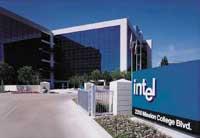Increasingly smaller computers

In addition, there is no need to look at the distance, since nanotechnological components are already used in microprocessors.
When we talk about nanotechnology we talk about objects between 0 and 100 nanometers. We therefore speak of components ten million times less than one meter. This decrease, in addition to providing many advantages, raises problems such as the temperature that the components must withstand in the case of microprocessors.
In fact, current microprocessors consume about 100 watts as a bulb. You may think they are so small that they have a great consumption, but this consumption is the result of thousands of operations they have to perform. In addition, as the size of the computer components decreases, they consume more power. Consequently, the same operation generates more heat.
That heat, of course, must be removed in some way, but it is not easy. Due to its small size, microprocessors do not have enough surface to expel this heat, which causes serious problems. Therefore, it is very important to analyze the composition of the materials used in the development of microprocessors. High temperature resistance materials are especially needed to prevent heat damage, such as cracks. In fact, it is clear that the effects of heat on microprocessors could cause failures in the operation of computers.
Difficulties in smallness

Research on temperature resistance and, in general, material properties is very difficult, but even more difficult in small sizes. In fact, many times the properties of the materials vary depending on their size and therefore the physical and mechanical characteristics are different on the scale of nanotechnology.
The study of the properties of objects of this scale also requires advanced technology that includes electronic microscopes, x-rays and nanoindenters.
Nanoindenters are devices that measure the hardness and resistance of materials. The measurement is performed at a nanometric scale using the diamond. However, nanotechnology requires more accurate measurements than all of them, and so many resources are needed.
Research for Inteles
Intel is one of the companies that has these technological resources and with more microprocessors in the world of computers. In fact, the U.S. company is forced to conduct continuous studies on its path to improving microprocessors, for which it establishes international agreements.

This is the research that has started with the CEIT technology center. This is an investigation into the relationships between the different layers of microprocessors, in order to improve these unions.
To do this, two CEIT researchers will travel to the headquarters of Silicon Valley and Silicon Forest Intel to analyze the reliability of the microprocessors produced by the American company.
This line of research, initiated eight years ago at CEIT, focuses mainly on research on the nanotechnological aspect. This research, along with the technological resources available at Intel's headquarters, hopes to make significant progress and, therefore, expect at the end of the project to incorporate faster microprocessors with the capacity to transport more data. Who knows if soon we will buy the Intel computer and see the CEIT logo?
Microprocessors, 14 storey houses The microprocessor is the brain or computer controller. Integrated circuit that gives and fulfills the most important orders and element of the computer. It is also known as CPU (central processing unit), where all computer data is processed. For this, within the microprocessor there are millions of electronic components, the most important are transistors. Microprocessors are apparently rectangular or square and almost always have a black color. Its most important characteristic is speed, which is measured in megahertz or gigahertz. For the construction of the microprocessors several layers must be superimposed. These layers contain silicon on the base and metal and ceramic roofs are placed on them. In these structures the threads that carry current and those that connect the active points are copper. Each microprocessor consists of 14 layers of this type, all of them included in a hundred millimeters. Logically, the relationship between these layers is very important and the bonding process is carried out at temperatures between 300 and 400 degrees, in vacuum and very slow. |
www.ihobe.net





